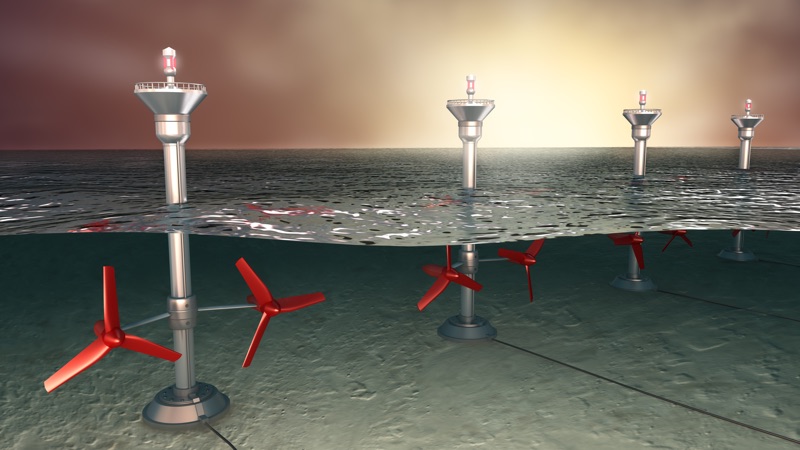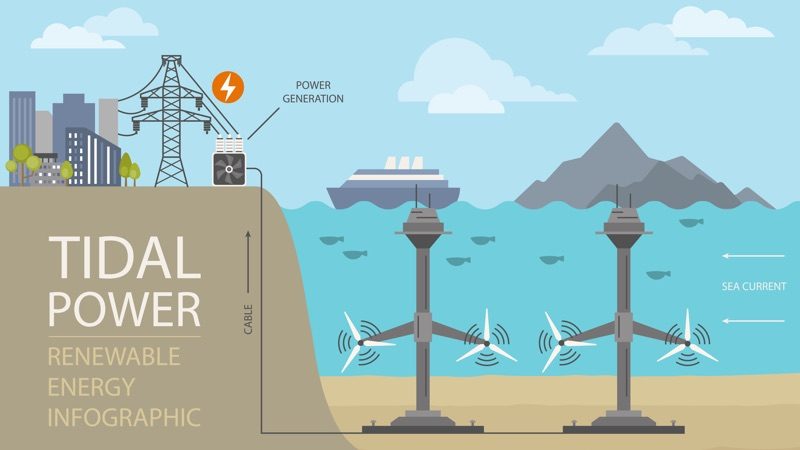As the world grapples with the urgent need to transition to cleaner and more sustainable sources of energy, the spotlight has increasingly turned to renewable energy options. Solar and wind power have made significant strides in recent years, but there’s another untapped source of renewable energy that holds immense promise: ocean energy. With its vast potential and the ability to provide a consistent and reliable source of power, ocean energy could play a vital role in our transition to a more sustainable future. In this article, we will explore the various forms of ocean energy, their benefits, and the challenges associated with harnessing this incredible resource.
The Diverse Forms of Ocean Energy
Ocean energy encompasses several different technologies, each with its own unique way of harnessing the power of the seas. These technologies can be broadly categorized into two main types: tidal energy and wave energy.
Tidal Energy
The gravitational forces of the moon and the sun generate tidal energy, causing the rise and fall of ocean tides. There are two main methods for harnessing tidal energy:
a. Tidal Stream System. These systems use underwater turbines to capture the kinetic energy of water as it flows in and out with the tides. The movement of water turns the turbines, generating electricity. We often compare tidal stream systems to underwater wind turbines, and they have the advantage of being predictable and consistent.
b. Tidal Range Systems. Tidal range energy relies on the difference in height between high and low tides, which creates potential energy. Dams and sluices can be constructed to capture this energy as water flows in and out. When the water level difference is substantial, it can generate significant amounts of power.
Wave Energy
Wave energy is harnessed from the motion of ocean waves. Several technologies are used to capture wave energy, including point absorbers, oscillating water columns, and attenuators. These devices convert the up-and-down or back-and-forth motion of waves into mechanical or hydraulic power, which is then converted into electricity.

The Benefits of Ocean Energy
The utilization of ocean energy offers a plethora of benefits that make it an attractive option in the renewable energy landscape.
Sustainability. It is a renewable resource, as natural forces drive tides and waves. It does not deplete finite resources like fossil fuels, making it a sustainable and eco-friendly energy source.
Consistency and Predictability. Unlike solar and wind energy, which are intermittent and depend on weather conditions, ocean energy is highly predictable. Tides and waves follow well-established patterns and can be forecasted accurately, providing a consistent source of power.
High Energy Density. It has a high energy density, meaning that a relatively small infrastructure can generate a significant amount of electricity. This makes it an efficient option for meeting the world’s growing energy demands.
Reduced Greenhouse Gas Emissions. It produces minimal greenhouse gas emissions during electricity generation, helping to reduce the overall carbon footprint of the energy sector.
Energy Independence. Many coastal regions can benefit from ocean energy, reducing their dependence on fossil fuels and enhancing their energy security.

Challenges and Barriers
While ocean energy holds great potential, there are several challenges and barriers we must overcome to realize its full promise.
High Initial Costs. Developing and deploying ocean energy technologies can be expensive. Building and maintaining infrastructure in harsh marine environments, securing permits, and conducting environmental impact assessments can drive up costs.
Environmental Impact. Corporations need to carefully plan ocean energy projects and design them to minimize their environmental impact. These projects can disrupt marine ecosystems and affect wildlife, so careful monitoring and mitigation measures are essential.
Infrastructure Durability. Equipment deployed in the ocean must withstand harsh weather conditions, corrosion, and the physical stresses of waves and tides. Developing durable and long-lasting infrastructure is a key challenge.
Grid Integration. Integrating into existing electrical grids can be complex. It requires matching the variable output of ocean energy with grid demand.
Public Acceptance. Like any energy project, installations can face opposition from local communities concerned about their environmental or aesthetic impact. Public awareness and education are essential to gain support for these projects.
Conclusion
Ocean energy represents a promising frontier in the quest for clean and renewable energy sources. Its predictability, high energy density, and minimal environmental impact make it a compelling option for a sustainable energy future. As technology advances, ocean energy has the potential to play a vital role in the global transition away from fossil fuels and toward a cleaner, more secure energy landscape. It is a testament to human innovation. We can harness the vast and powerful resources of the seas to power our world while protecting the environment for future generations.




